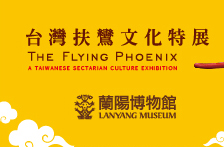
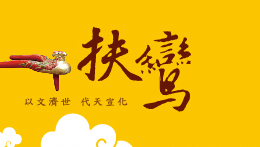

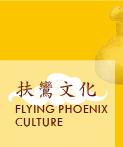
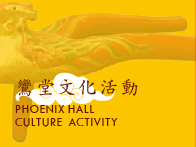
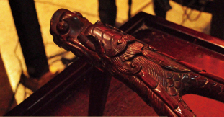


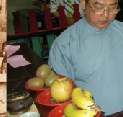
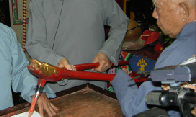
台北市孔廟禮門、義路鳥瞰圖。
(圖片出處:台北市孔廟管理委員會)
|
3-2 恩主崇拜 一般鸞堂以三恩主或五恩主為主神,學者李亦園稱為「恩主公崇拜叢」。 Worshipping the Benefactor Phoenix halls follow Confucianism as a religion. Confucius once said, "Cursed are those who first buried wooden idols of the dead, " so Confucian temples feature spirit tablets in place of statues or other likenesses. Initially, phoenix halls also only had spirit tablets, but idols appeared during the period of Japanese rule.
3-3 詩社鸞堂是文人結合的團體,他們紛紛成立詩社。臺北瀛社、臺中櫟社、臺南南社被稱為臺灣三大詩社,宜蘭也有登瀛吟社、仰山吟社、文光社、蘭社、東明吟社等十餘詩社出現。昭和5年(1930)頭城喚醒堂盧纘祥創辦《詩報》,發行時間長達15年,稿源來自全臺,集傳統文學作品於一爐,為日治時期臺灣傳統文學的延續、推展、保存,居功至偉。 Poetry Societies Phoenix Halls were made up of groups of intellectuals and many also established poetry societies. They had the utmost influence on the continuation, promotion, and preservation of traditional literature in Taiwan during the Japanese occupation.
3-4:崇聖敬字 鸞堂以儒教自居,對傳統儒家文化發揚與保存不遺餘力;大正6年(1917)鸞堂活耀人士顏雲年等人組織崇聖會,發行《崇聖道德報》、《孔教報》等刊物,提倡儒家傳統道德。
Worship the Holy, Venerate Words Scholars feel that literature is sacred and sublime, and must be treated as such. Papers containing written words must not touch the floor and should be disposed only by respectful incineration. Therefore, most phoenix halls have an incineration pavilion where paper can be burned during ceremonies.
3-5:聖樂 聖樂是仿祭孔的雅樂而來,主要用於恩主誕辰時奏樂,或是宣講聖諭時串場用,也有別稱十三音或十三腔,因為合樂演奏時,採用胡琴等十三種樂器而得名,是屬南管郎君唱系統。
Sacred Music Sacred music comes from imitating ancient Chinese court music used to celebrate Confucius. It is mainly used to observe the birthday of the benefactor or during interludes between readings of the holy texts.
|
The Minong Village Jing-zih Oblation Furnace, a class three historic site located in Menong Township
The Global Chinese Culture & Arts Award winner Li Tiangui leading a performance of the Taiwan Shiquanqiang Ensemble.
|